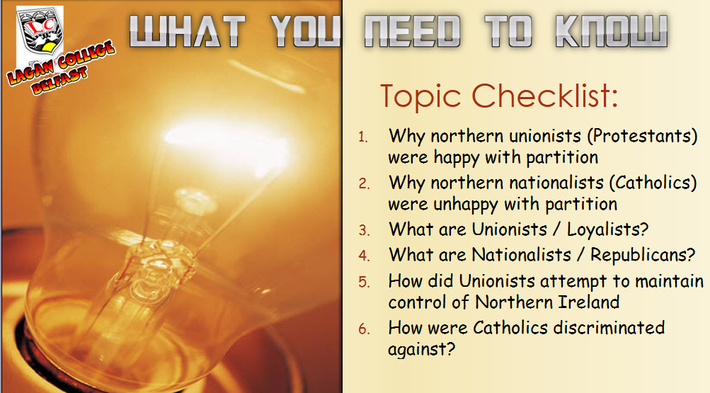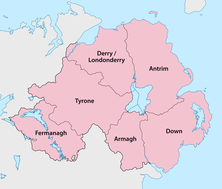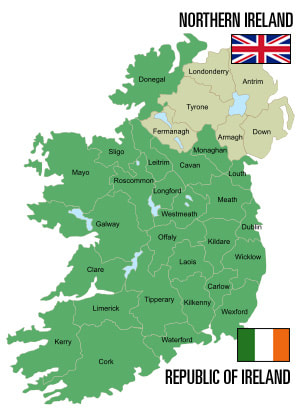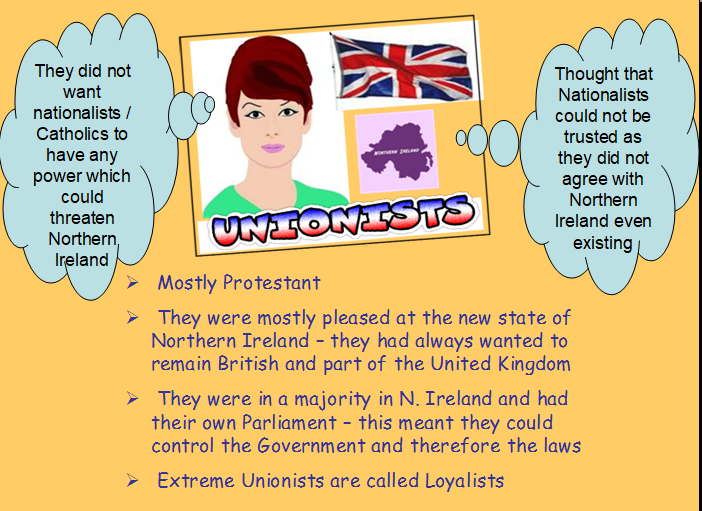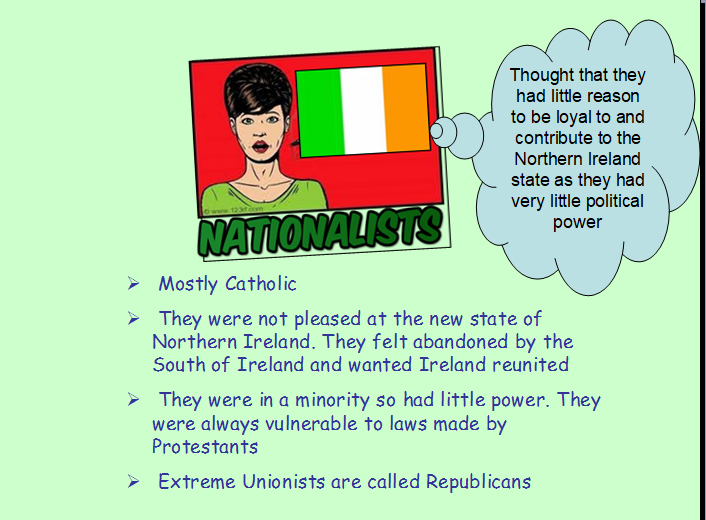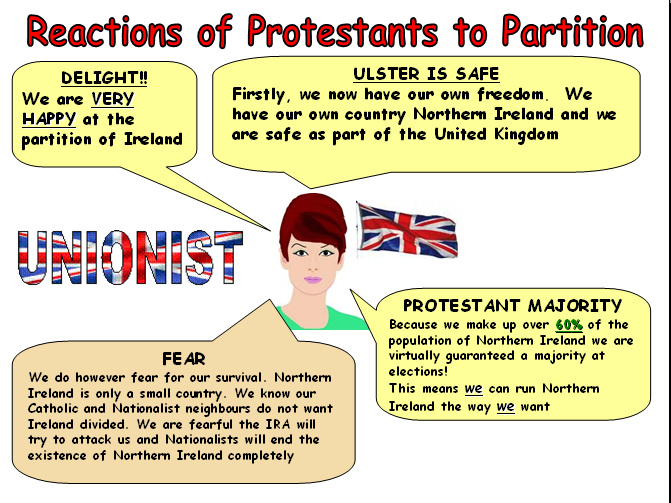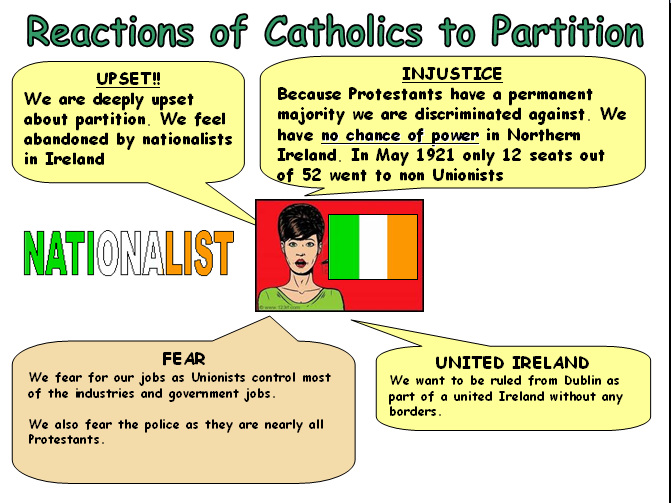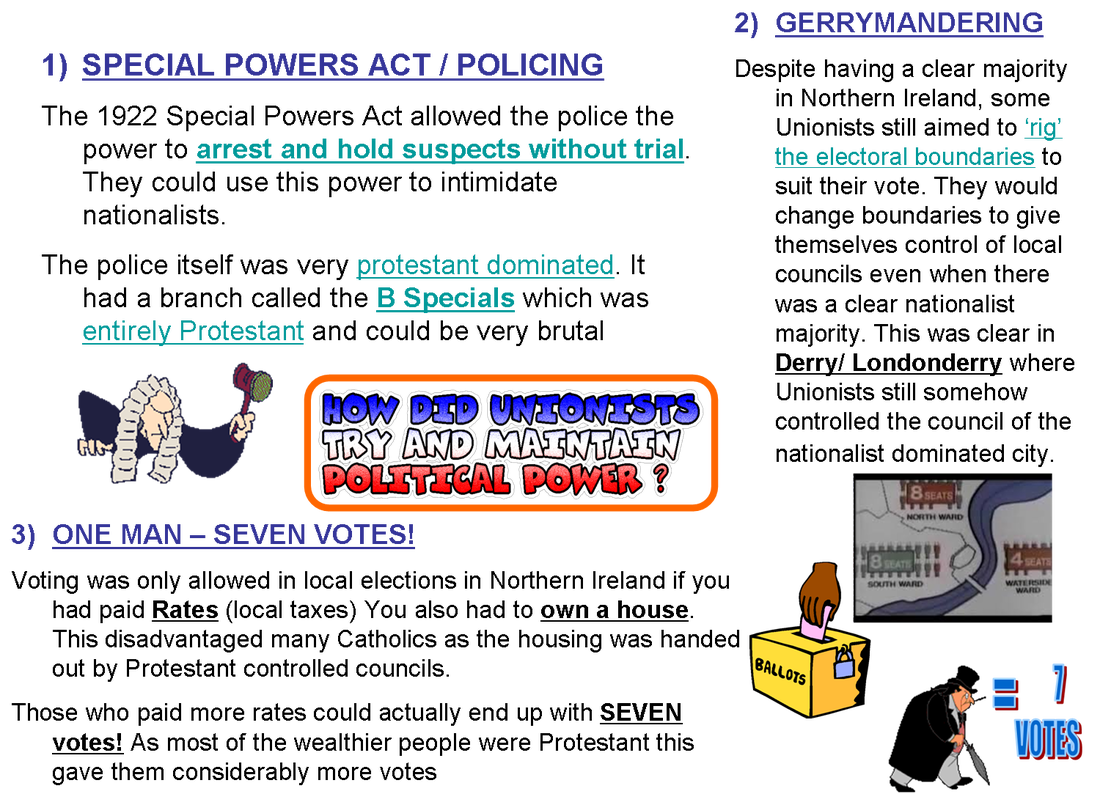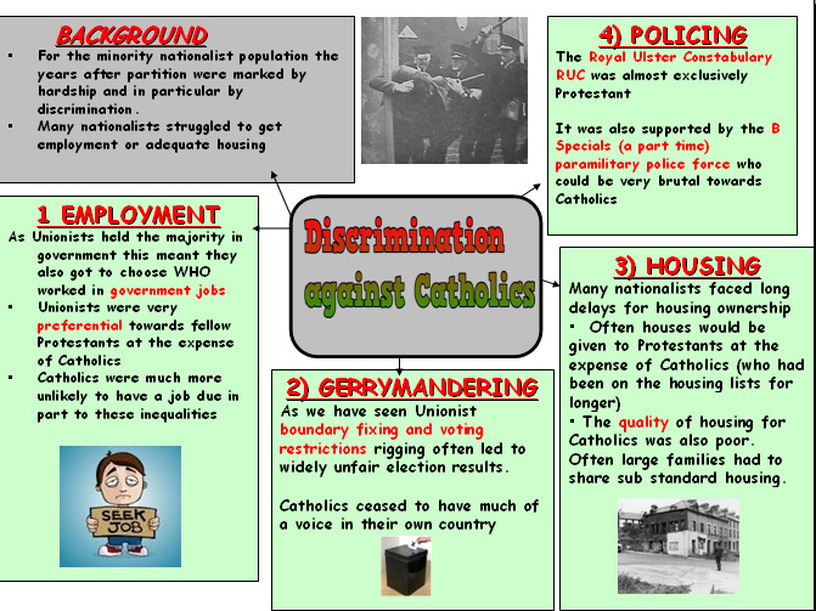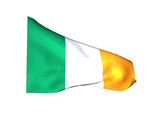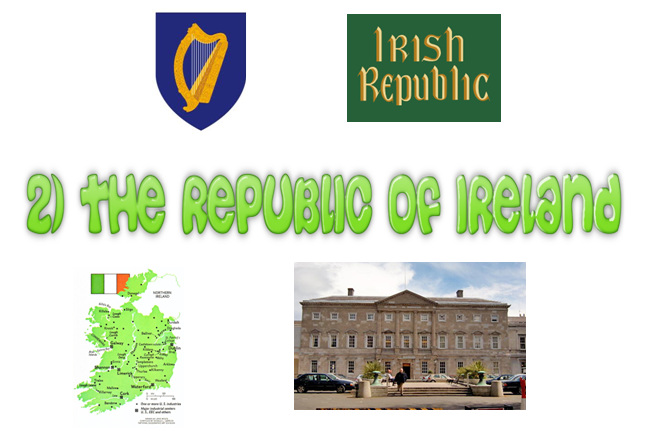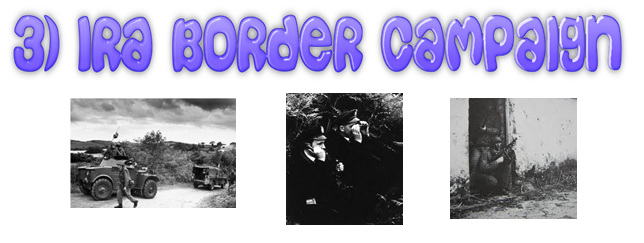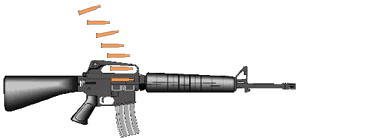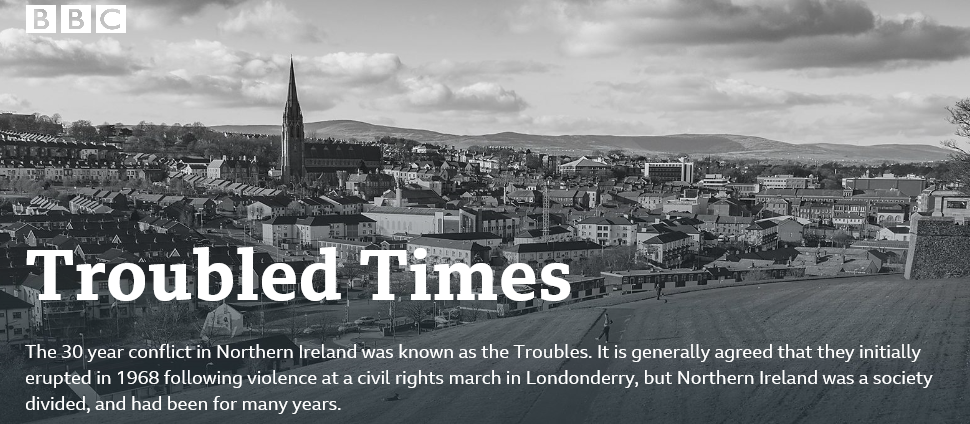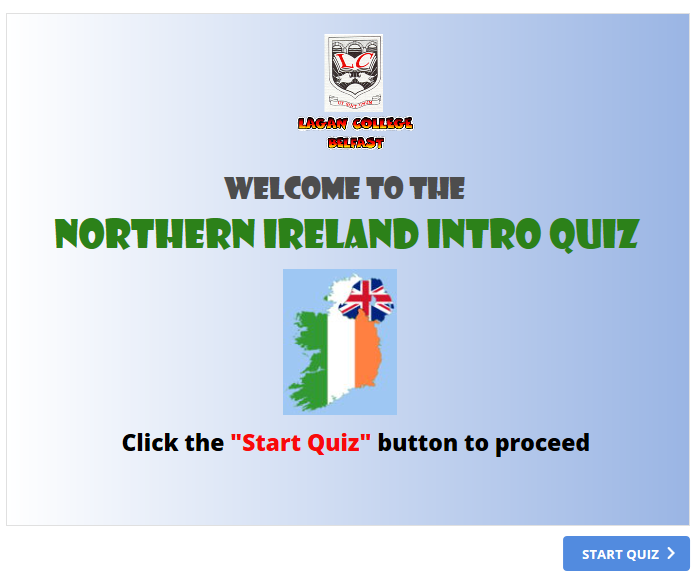|
In 1920 the GOVERNMENT OF IRELAND ACT divided or PARTITIONED the island of Ireland into TWO . Before this, Ireland was one country ruled by Britain
|
In Northern Ireland partition was understandably viewed from two entirely different viewpoints
Unionists, who now completely controlled Northern Ireland due to their built-in majority, began to introduce 4 things to ensure that they controlled the nationalist community in Northern Ireland:
|
|
|
The minority Catholic community struggled against a variety of low level discrimination designed at 'keeping them in their place' and 'neutralising their threat to the existence of Northern Ireland' These actions were based more on the fear many Protestants had about the threat of a united Ireland rather than on sectarian hatred. (Although this did exist in places)
This discrimination would only serve to stir nationalist anger at the injustice. In the long term it would lead to the outbreak of the 'Troubles'
TIP: YOU HAVE TO BE AWARE OF THE 4 TYPES OF DISCRIMINATION BELOW.
This discrimination would only serve to stir nationalist anger at the injustice. In the long term it would lead to the outbreak of the 'Troubles'
TIP: YOU HAVE TO BE AWARE OF THE 4 TYPES OF DISCRIMINATION BELOW.
YOUTUBE VIDEO EXPLAINING NORTHERN IRELAND IN THE 1960'S
|
|
Watch: Gerrymandering
Relations between Northern and Southern Ireland were never very good
The leaders of the two states never met from the 1920's until the 1960's - despite sharing the same island!
The leaders of the two states never met from the 1920's until the 1960's - despite sharing the same island!
|
|
Between 1956 & 62, a low level, but well publicised campaign of shootings and bombings by the IRA (Irish Republican Army) took place. This was known as the Border Campaign.
|
|
|
|
|
|
|
CLICK for link to fantastic BBC resource on Northern Ireland in the 1950's & 60's
© J Wishart / Rita Morgan 2019-20
